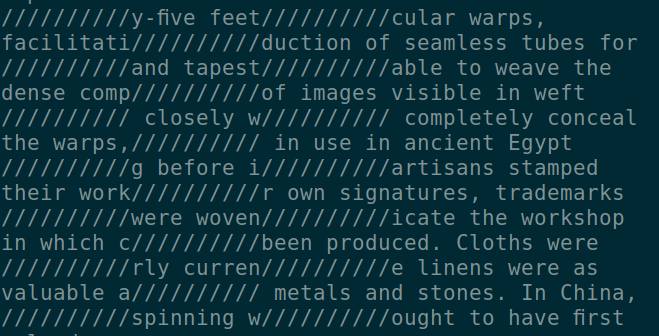User:Alice/Special Issue V: Difference between revisions
No edit summary |
No edit summary |
||
| Line 4: | Line 4: | ||
The Intimate and Possibly Subversive Relationship Between Women and Machines Reader explores topics from women's introduction into the technological workforce, the connection between weaving and programming, and using technology in favour of the feminist movement. One major concept that appears throughout the reader is an almost mystical connection between women and software writing, embedded deep in women's tradition of weaving not just threads, but networks. Does software have a gender? | The Intimate and Possibly Subversive Relationship Between Women and Machines Reader explores topics from women's introduction into the technological workforce, the connection between weaving and programming, and using technology in favour of the feminist movement. One major concept that appears throughout the reader is an almost mystical connection between women and software writing, embedded deep in women's tradition of weaving not just threads, but networks. Does software have a gender? | ||
=== Research === | === Research === | ||
[[File: overunder.png | [[File: overunder.png|Category:Special Issue 5]] | ||
== Code == | == Code == | ||
<source lang=python> | <source lang=python> | ||
Revision as of 13:07, 22 March 2018
Reader #1
Title and topic
Techno/Cyber/Xeno-Feminism The Intimate and Possibly Subversive Relationship Between Women and Machines Reader explores topics from women's introduction into the technological workforce, the connection between weaving and programming, and using technology in favour of the feminist movement. One major concept that appears throughout the reader is an almost mystical connection between women and software writing, embedded deep in women's tradition of weaving not just threads, but networks. Does software have a gender?
Research
Code
<source lang=python>
import linecache import textwrap import sys from sys import exit
class LeavingProgram(Exception):
pass
def parse(program):
cmds = program.split(',')
splitted_cmds = []
for cmd in cmds:
splitted = cmd.split()
splitted_cmds.append(splitted)
return splitted_cmds
#return tokenize(program)
def tokenize(s):
return s.split()
def repl():
while True:
try:
val = eval(parse(input('> ')))
if val is not None:
print(val)
except LeavingProgram:
break
text = None line_number = 0 last_index = 0
def eval(cmds):
global text global line_number global last_index
for cmd in cmds:
if cmd == []:
line_number += 1
last_index = 0
elif cmd[0] == 'load':
contents = open('output.txt').read()
text = textwrap.wrap(contents, 40, break_long_words=True)
print('\n'.join(text))
line_number = 0
last_index = 0
elif cmd[0] == 'show':
print(text[line_number])
elif cmd[0] == 'under':
current_line = text[line_number]
char_number = int(cmd[1]) - 1
char_list = list(current_line)
x=range(last_index, char_number + last_index + 1)
for time in x:
if time < len(char_list):
char_list[time] = u'\u21e2'
last_index += char_number + 1
joined = .join(char_list)
text[line_number] = joined
elif cmd[0] == 'over':
last_index += int(cmd[1])
elif cmd[0] == 'pattern':
pattern = text[0:line_number + 1]
print('\n'.join(pattern))
elif cmd[0] == 'quit':
print('Adios!')
raise LeavingProgram()
else:
joined = ' '.join(cmd)
print('Did not understand command {}'.format(joined))
if __name__ == '__main__':
repl()
<source>

